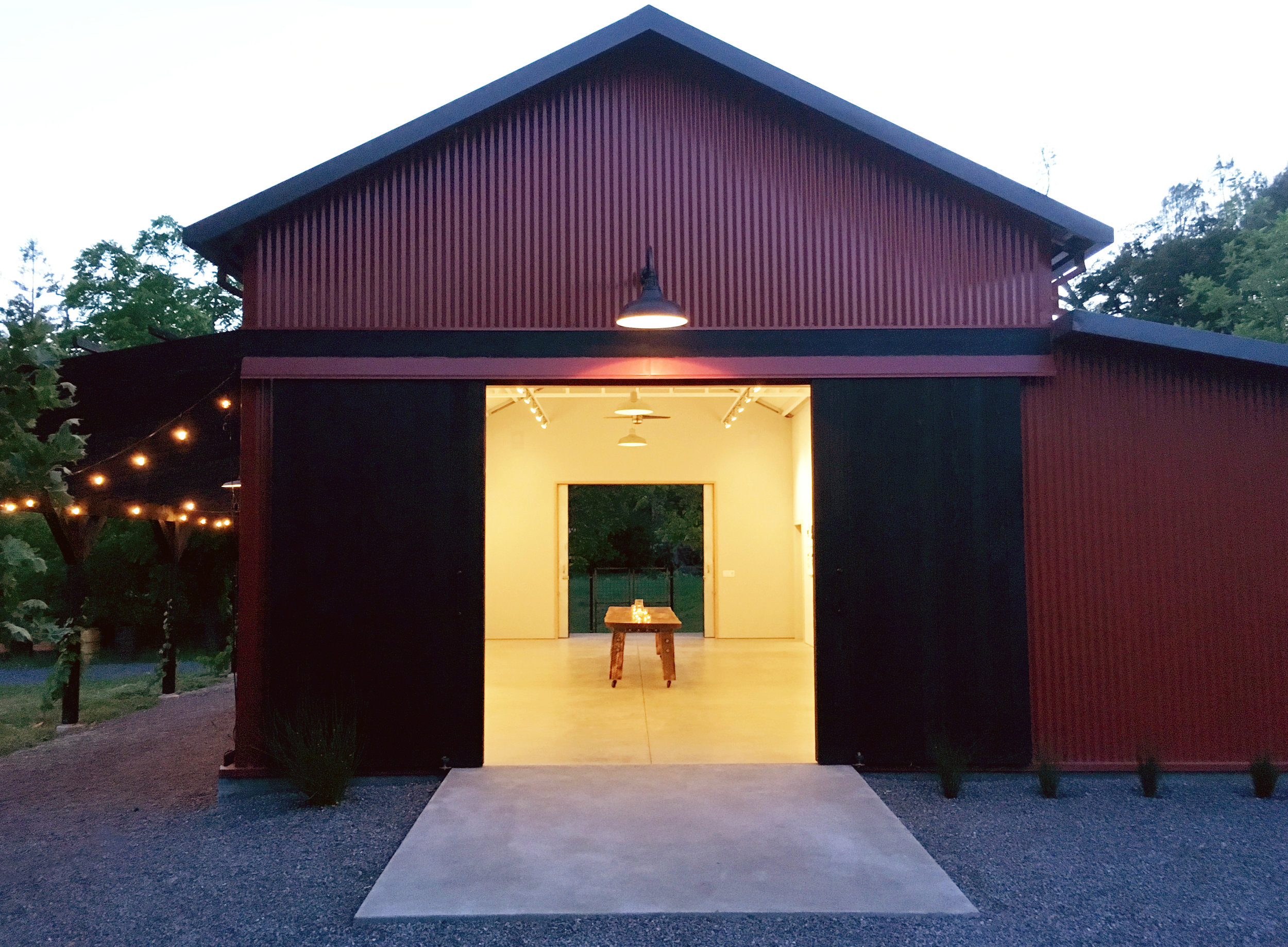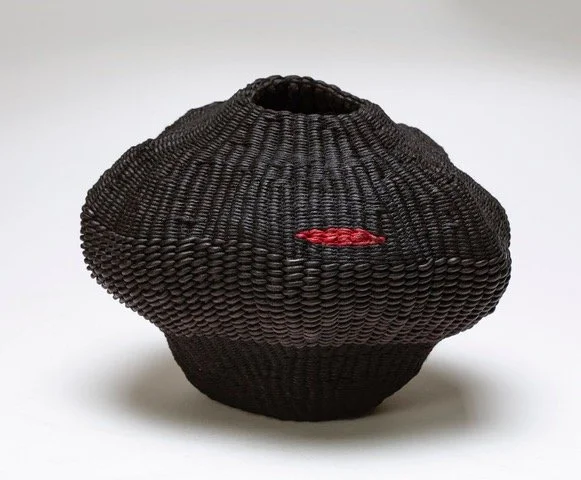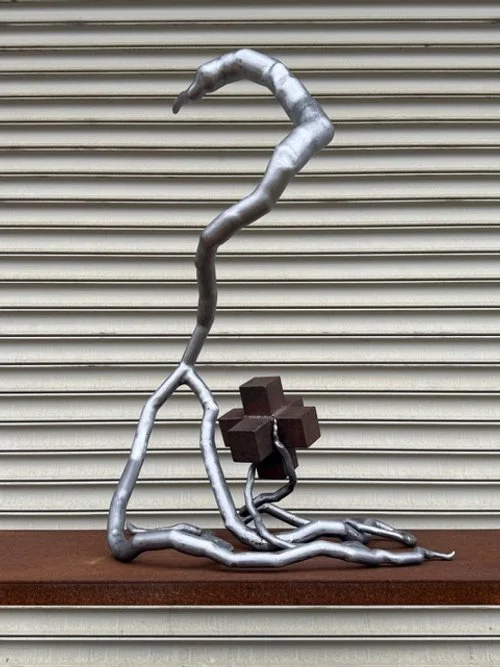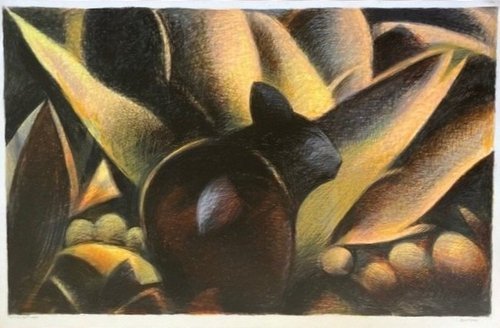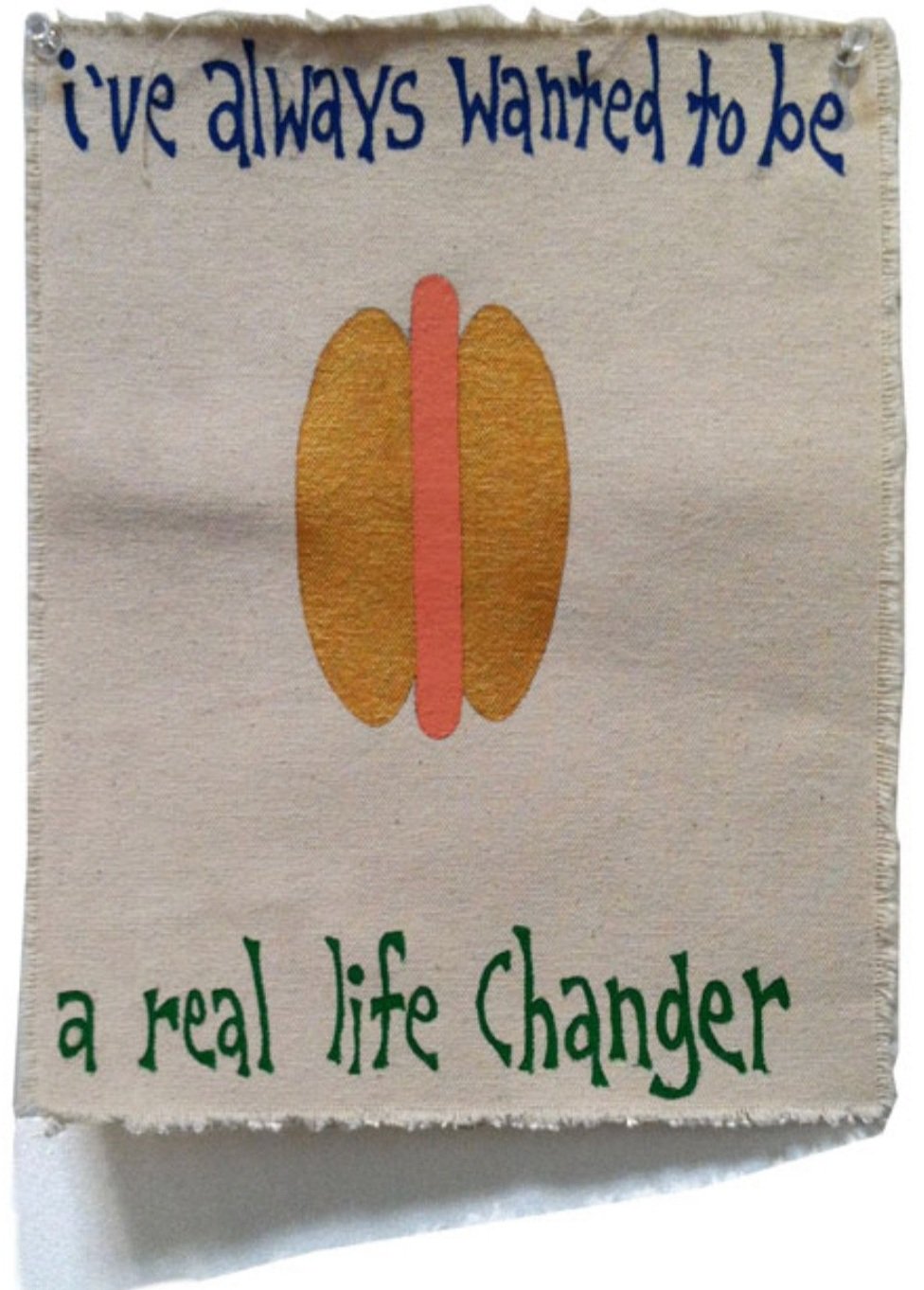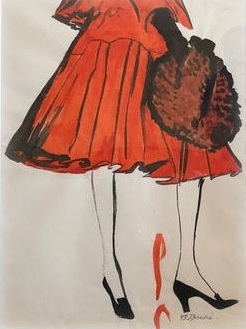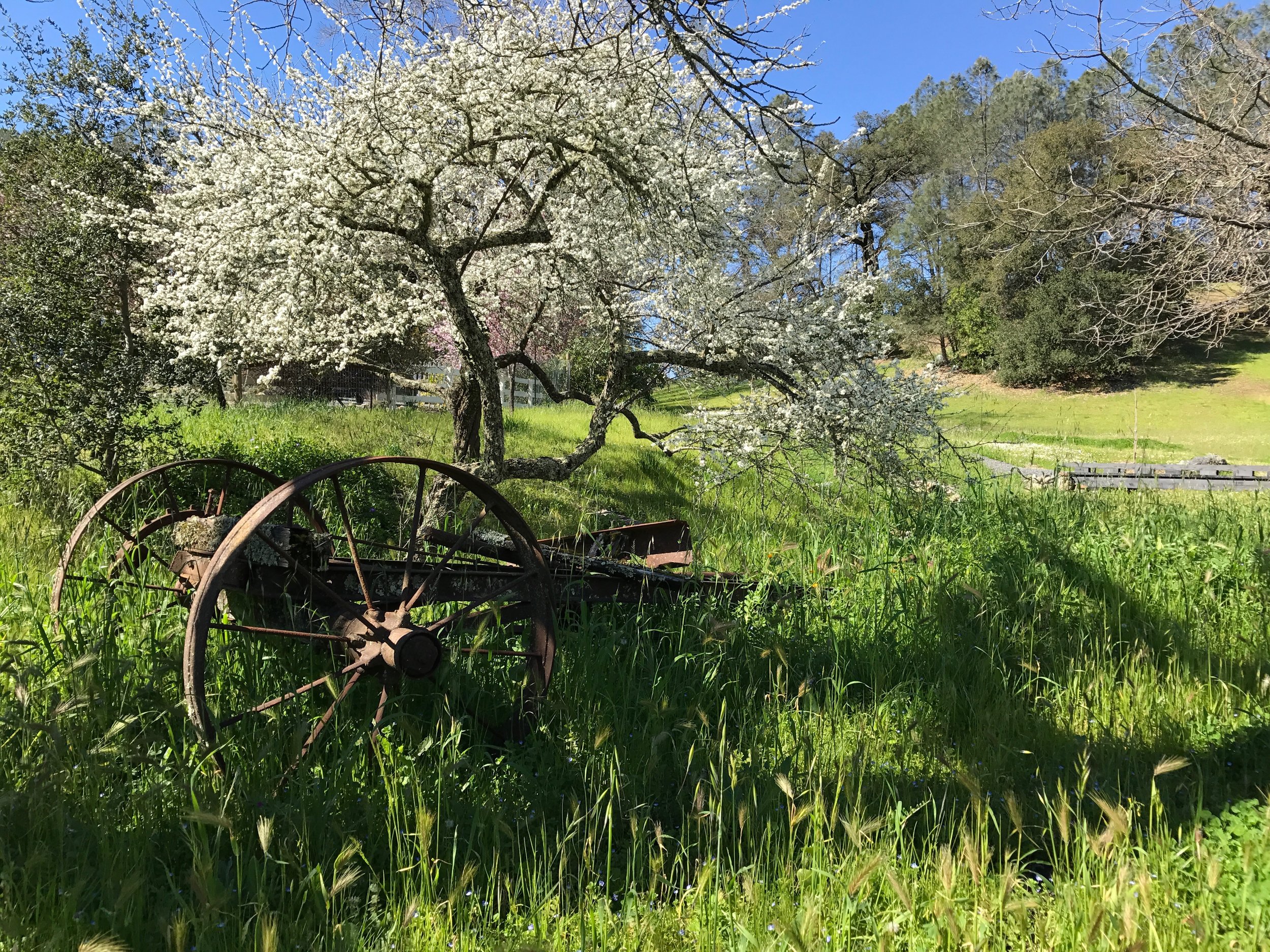INSIDE OUT
9.28.2025
My work is made with a wide variety of threads, fabric, paper, wire, cord, ribbon and other soft materials. Using ancient techniques like weaving, twining, coiling, knitting, and sewing, the pieces often veer into the unexpected—merging tradition with whimsy - structure with spontaneity. The twisting, molding and shaping of each form is an exploration of asymmetry, imperfection and humor.
The vessels are made with paper-covered wire, dipped in paper pulp and painted. Others are randomly woven using armature, floral and copper wire, latex tubing and waxed linen thread.
The sculptural baskets are woven from the bottom up, winding waxed linen or leather cord around upright spokes which are added or taken away to shape the final form. They are then painted with acrylic ink.
The bowls are constructed with layers of Japanese paper, plaster tape, and paint, built over a blown-up balloon that serves as a mold. Once the layers are dry, the balloon is popped, leaving behind a delicate yet sturdy form that is painted and sometimes finished with a coiled detail.
Some of the wall pieces are made with recycled Sari silk ribbon sewn and glued, then painted. Others are crafted from knitted floral wire, leather cord, and paper-covered wire. The pieces are then stitched together to create three dimensional forms.
The process of working with my hands, finding the next step, and letting the materials guide the work are what keep me engaged. Sometimes a single word sparks an idea for a piece; other times, the piece itself will ignite a word.
Ultimately, my work is a play on tradition—rooted in centuries-old techniques, yet reaching for something personal, sculptural, and unexpected.
- Liza Pike

